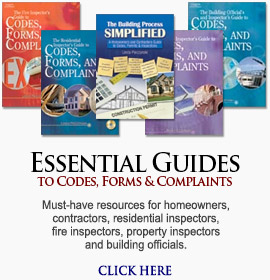Building in a Flood Plain
Too often purchasers of property do not do their due diligence to check for potential problems with the land or the building. This seems to happen quite frequently when property is located in a flood plain. I’ve had cases where people build bridges over creeks without a building or storm water management permit, use a bulldozer to move dirt around without a grading permit or buy property at a tax sale that later turns out to be a retention pond. Of course, they want a permit to build on their new property. In a case from Louisiana (Lafleur v. Blue, 6 So.3d 348(2009)), a purchaser learned the hard way that he should have investigated the property more thoroughly. After owning property for a number of years, he decided to sell it. However, a potential buyer discovered that it was in a floodway. Up until that point, the owner, failed to do his research. He then sued the local government agency for not indicating on the plat that part of the lot was in a floodway. The plat did show the lot was in a flood zone. The court said the owner should have researched the property “a little more” and decided against him.


Floodplain issues run the virtual gamut across this country, from the lack of knowledge on the part of the general public to the governing bodies of local jurisdictions looking the other way and going ahead with construction on a project because it’s for the betterment of a community. Only in times of a flood emergency, it seems, do people really get aware of the floodplain requirements. In actuality, when it comes right down to it, building within the confines of a floodplain is not that major a change in normal building. Raising elevations and ensuring sufficient freeboard is a small price to pay to ensure the safety of the occupants.
Our house is on a 2 acre lot. The back part is in the flood plain. The city has in the last several years allowed a lot of development that has caused our property. To be endangered as last summer water came in our house as well as four other home owners on our street can you help direct us to an attorney?
@Daro blankenship
What state are you in?
I am sick and tired of tax payers being asked to pony up money to pay for people who, in their ignorance, decided to build their homes in a flood plain just because the land was cheap at the time they bought it. It should be up to the homeowner to exercise due diligence, determine the history of flooding in the area and the impact of current building and development projects on rivers and streams and how it might increase the threat of upstream and downstream flooding. If you’re not sure how to conduct this research hire a professional. Don’t want to spend the money on a professional geologist? Go do your nearest college or university and find a grad student interested in earning a few hundred bucks. Don’t be penny wise and pound foolish and for goodness sakes, don’t expect the taxpayers to bail you out!
I cover this issue in my book, The Building Process Simplified. It’s not enough to buy your dream house, you need to do your due diligence and find out if there are storm water management issues involving the residence before making the purchase. With weather getting more intense, this is going to be more important than ever in the future.
I bought property in a neighborhood that is totally in a floodway. Maps been out since 2007. Many houses even in ground pools built right next to the river. I received permit to build. Was taken away. Total discrimination by the Town as some were able to build and I was told not to put an RV on my waterfront property. My neighbors get a lot of free land. I understand the purpose of maps but discrimination is illegal plain and simple.